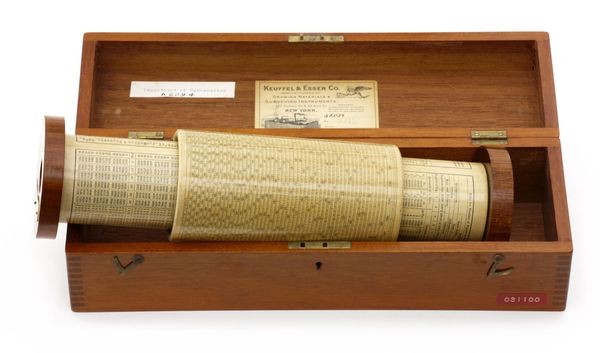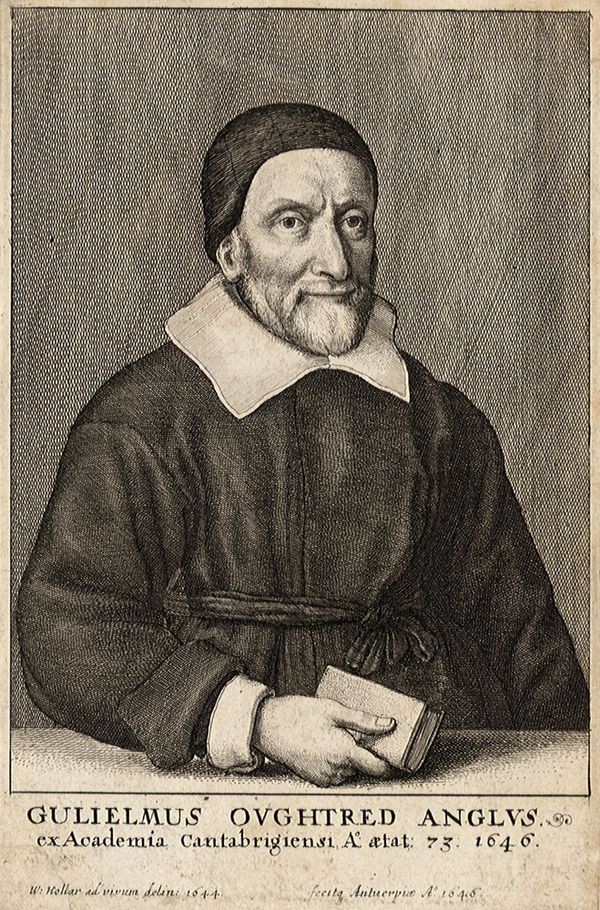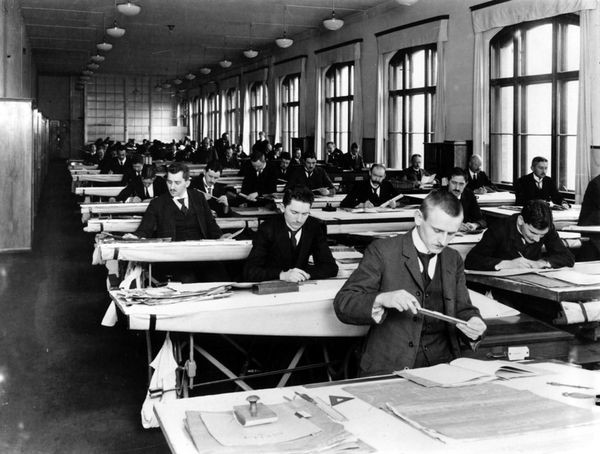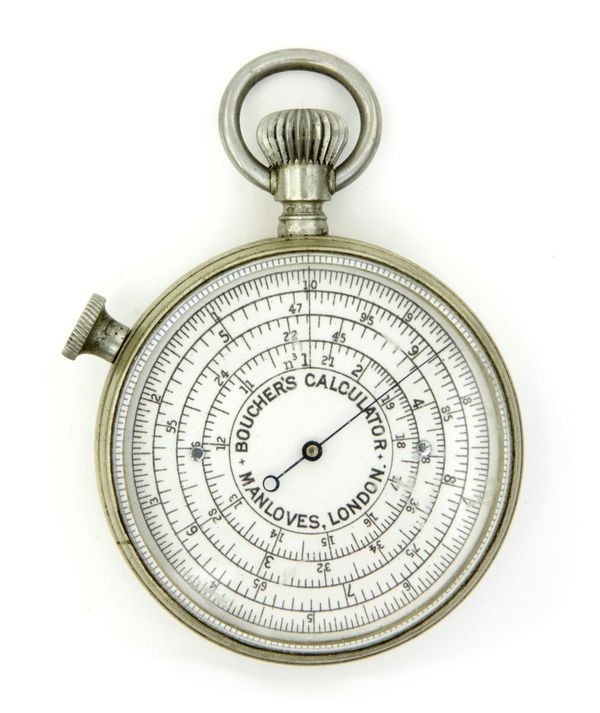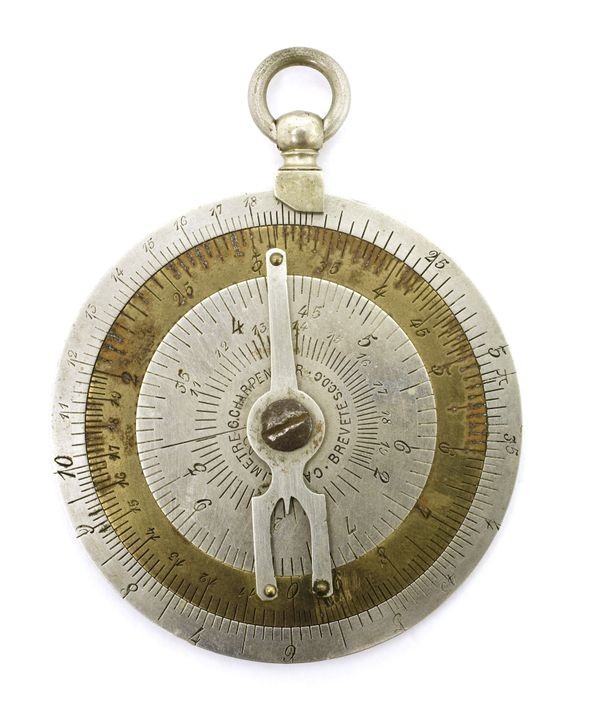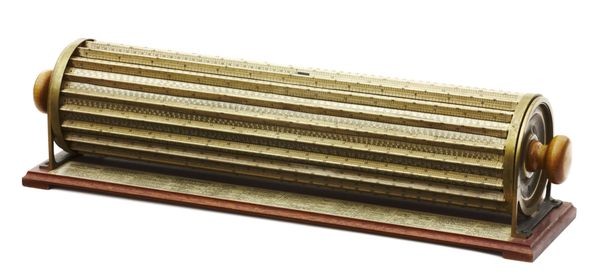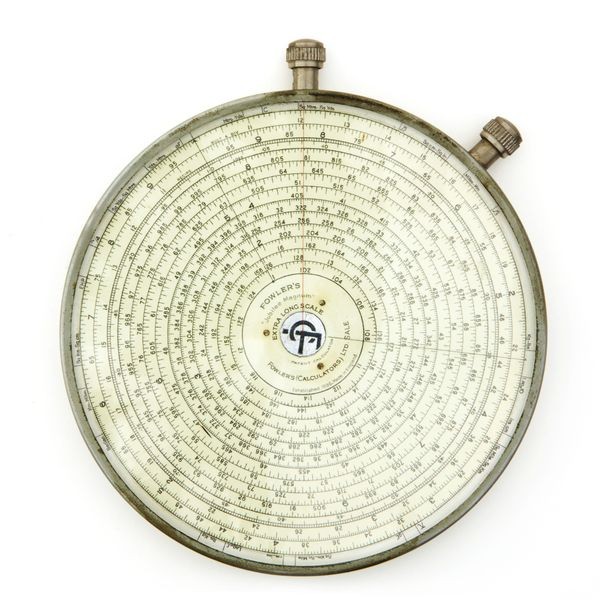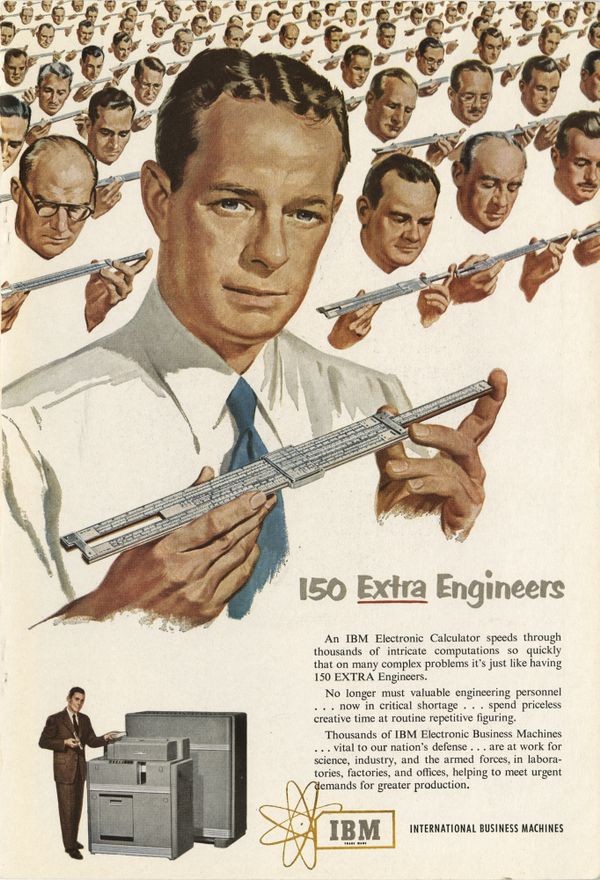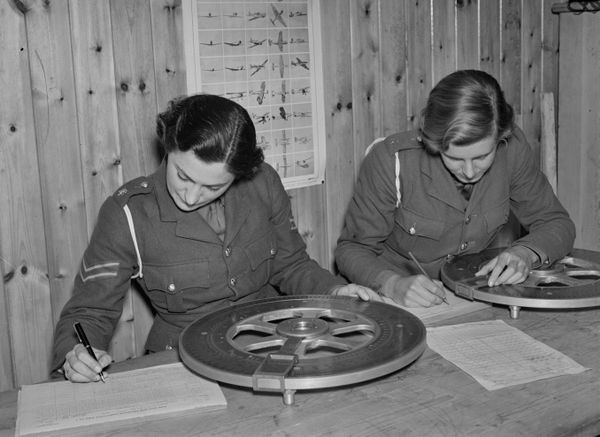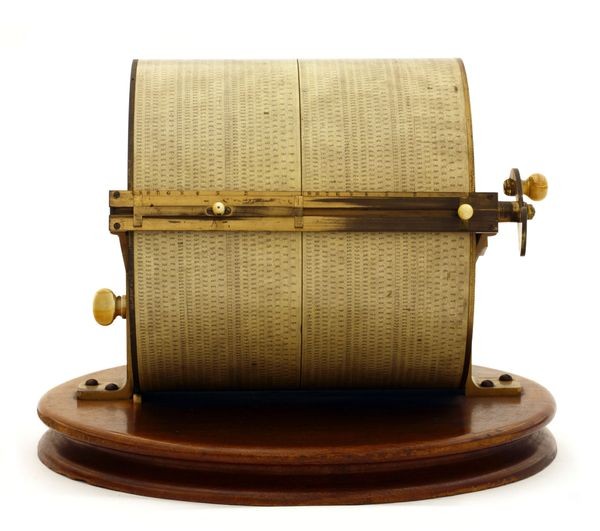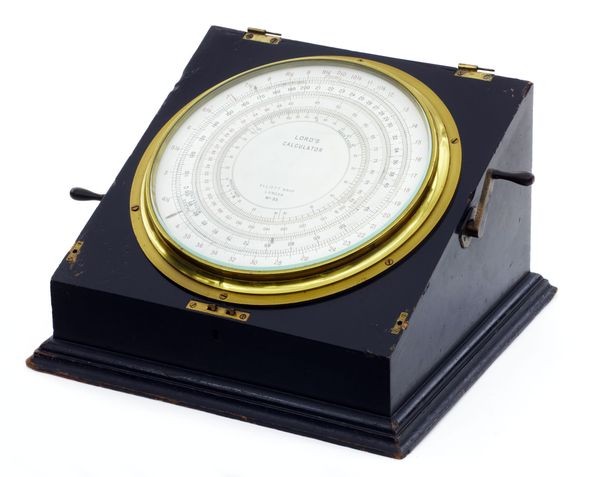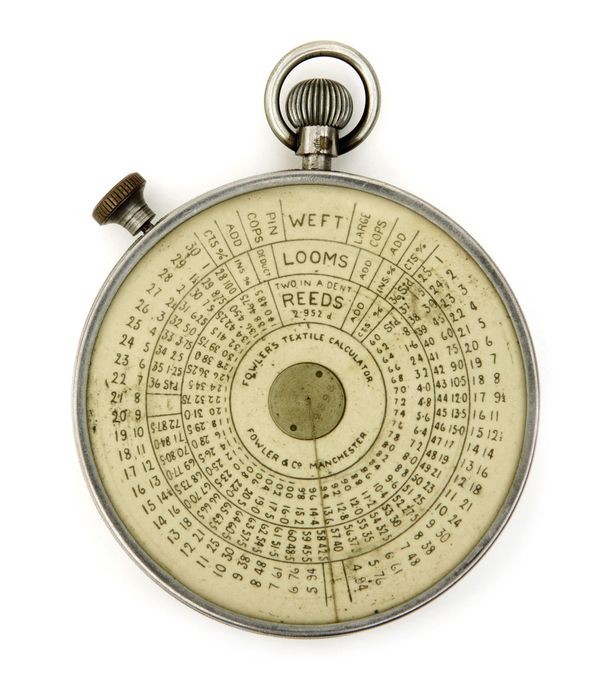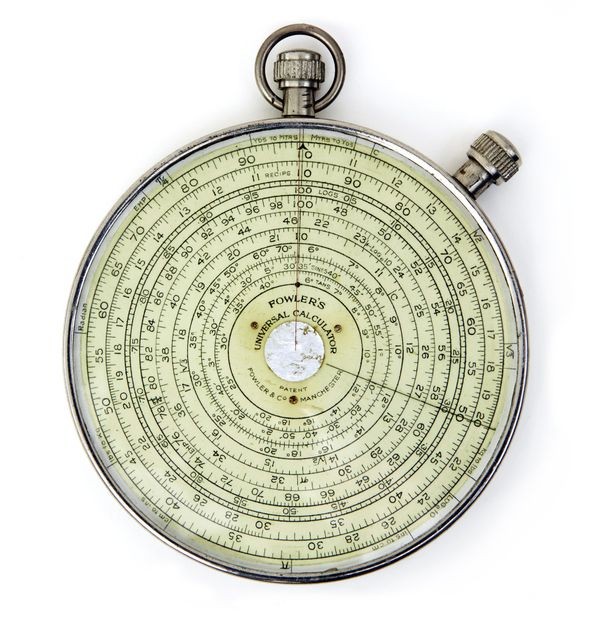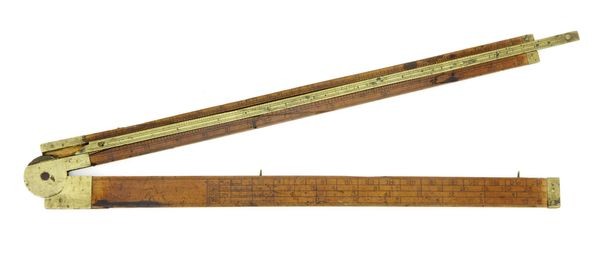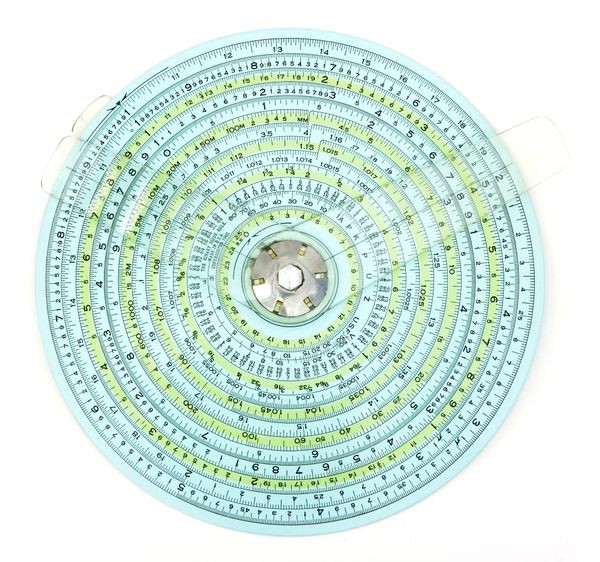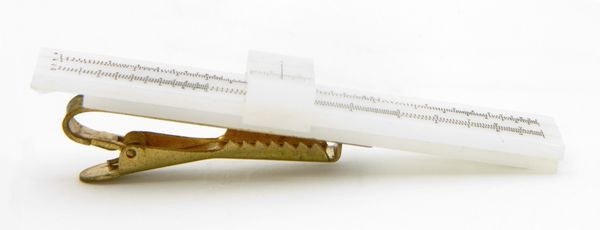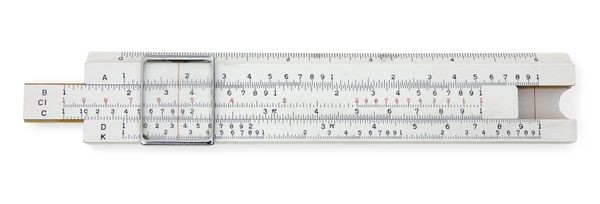Slide Rules
Fuller's slide rule
A bracket could hold this rule at an angle for convenient operation.
Slide Rules
The principle behind a slide rule is straightforward. Two bars, each marked with scales, slide next to each other. Aligning numbers on different kinds of scales allows different calculations, such as multiplication or trigonometry. Accuracy, however, is limited and depends on the user’s skill.
Invented in the 1600s, slide rules were widely used through the 20th century.
William Oughtred
Oughtred is widely credited with inventing the slide rule in the 1620s. His initial design was for a circular slide rule, but the principles are the same.
View Artifact DetailAEG Office, Berlin
European engineers embraced slide rules before Americans did. By 1940, however, this scene was typical of engineering offices worldwide.
View Artifact DetailGunter's line of numbers
This rule has Gunter's line of numbers and navigational scales on opposite sides.
View Artifact DetailBoucher's Calculator
This is an early version of a watch-size rule. In a 1911 catalog of “Drawing Materials and Surveying Instruments” it was listed for $8 with cardboard dials, and for $14 with metal dials.
View Artifact DetailMannheim slide rule
Mannheim added the modern cursor to the slide rule about 1850. This early example has lost its cursor.
View Artifact DetailLord's Calculator
The circular scales moved independently and there was no cursor.
View Artifact DetailCalculigraphe
Watch-size rules were popular, and even stylish, in some circles.
View Artifact DetailDuplex slide rule
An early example of slide rules used by generations of engineers, with a sliding metal "indicator." Glass indicators were more popular after about 1910.
View Artifact DetailCalculimetre
This is a very simple portable slide rule. The forked pointer is fixed to the brass ring with rivets and rotates with it.
View Artifact DetailThatcher's Rule
A rule specially designed with very long scales for greater accuracy.
View Artifact DetailLog-Log Duplex Trig slide rule
Structural engineers often used extra-long rules for greater accuracy.
View Artifact DetailFowler's "Jubilee Magnum," slide rule
The 79-inch spiral scale is much more accurate than a standard 10-inch rule.
View Artifact DetailCircular slide rule
Circular slide rules eliminated the “off the end” problem because the scales wrapped around continuously.
View Artifact DetailTeaching slide rule
This very large teaching rule matched Pickett’s popular 34-scale Model N4-ES. Learning to use all the scales took quite a while.
View Artifact DetailOtis King cylindrical slide rule
This 60-inch rule could be closed and slipped in a pocket. The “Model K” had just two scales and could only multiply and divide.
View Artifact DetailAdvertisement comparing slide rules to electronics
The IBM Card-Programmed Electronic Calculator, introduced in 1949, was a primitive computer created by connecting other IBM products.
View Artifact DetailAirforce personnel using a slide rule
During World War II, British Women's Auxiliary Air Force (WAAF) personnel used slide rules to calculate bomber routes, undertake meteorological forecasting, and plot aircraft positions.
View Artifact DetailLeadbetter slide rule
This four-sided rule for revenue calculations had room for more scales.
View Artifact DetailElizur Wright Arithmeter, No. 11 Cylindrical Slide Rule
Designed by Wright, known as the ‘Father of the U.S. Life Insurance industry,’ to make accurate insurance calculations. It is the equivalent of a linear slide rule more than 60 feet long.
View Artifact DetailGauger's slide rule
An unusual rule with two slides. A “gauger” was a British collector of excise taxes, particularly for liquor casks, whose volume had to be computed.
View Artifact DetailFowler's Textile Calculator
A specialized rule for the fabric trade, made like a large pocket watch.
View Artifact DetailFowler's Universal slide rule
Fowler added unit conversion markings to high-accuracy conventional scales.
View Artifact DetailCoggeshall slide rule
A carpenter's measuring rule with a slide rule in one arm.
View Artifact DetailMetal slide rule
A rule for calculating surveying angles and distances. Slide rules have been made from wood, steel, aluminum, bamboo, and plastic.
View Artifact DetailThe Binary Slide Rule, circular slide rule
This machinist’s rule includes rational and decimal fractions, such as ¾ and 0.75.
View Artifact DetailLoga measurement-conversion slide rule
This rule was designed specifically to simplify conversions between different units of measurement.
View Artifact DetailSlide rule
This aeronautical engineering rule was made for North American Aviation.
View Artifact DetailLog Log slide rule
Pickett was proud of their rules’ color. Their advertising claimed “EYE-SAVER Yellow prevents headaches and tired eyes; aids accuracy.”
View Artifact DetailSlide rule
Ricoh was founded in 1936 as “Riken Sensitized Paper” and is better known now as a manufacturer of copiers and cameras.
View Artifact Detail